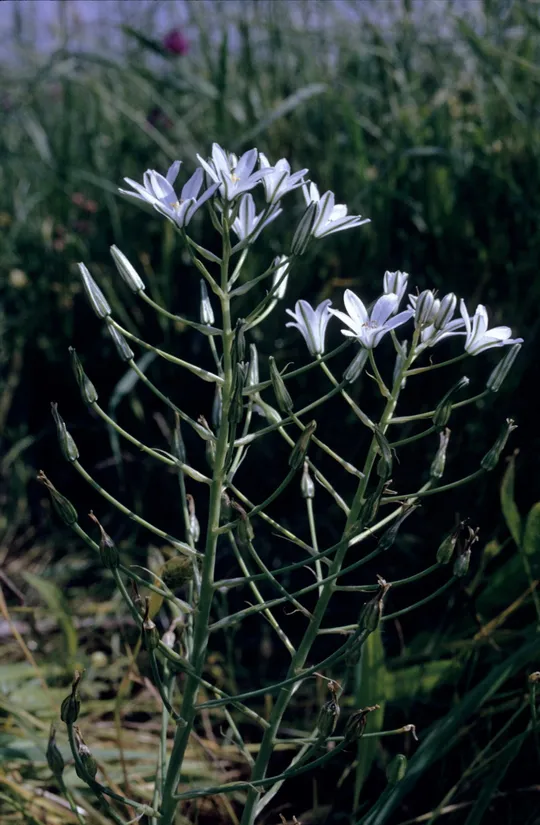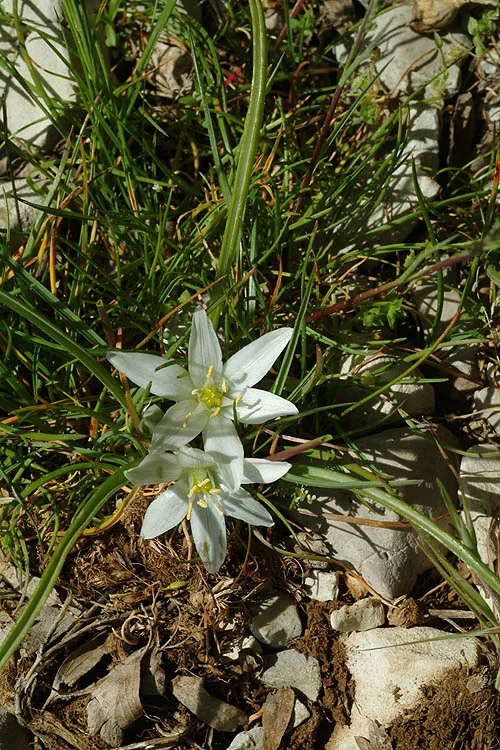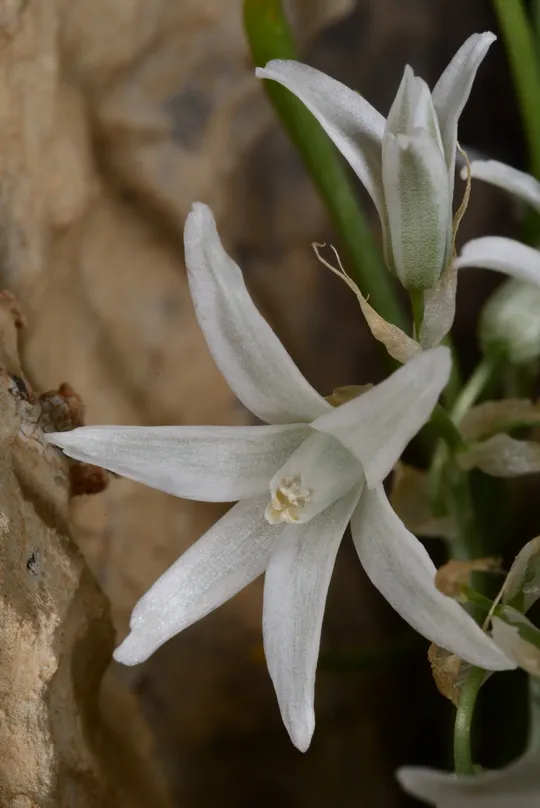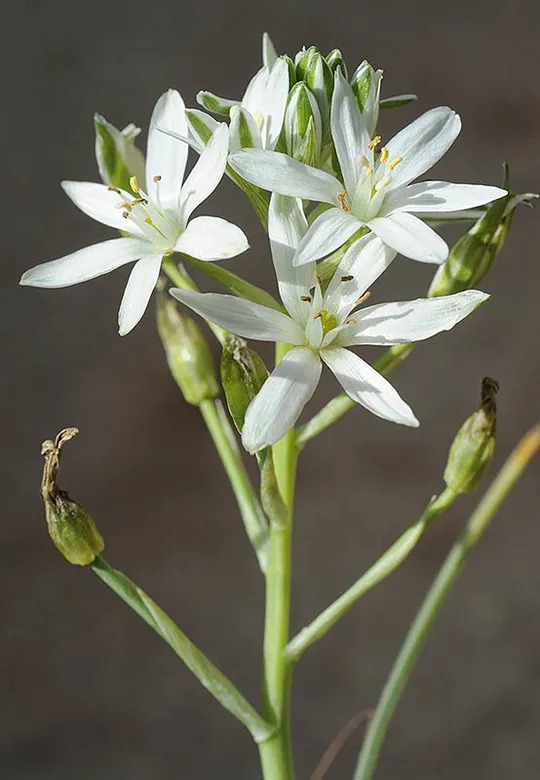Tawny Star-of-Bethlehem
Ornithogalum fuscescens
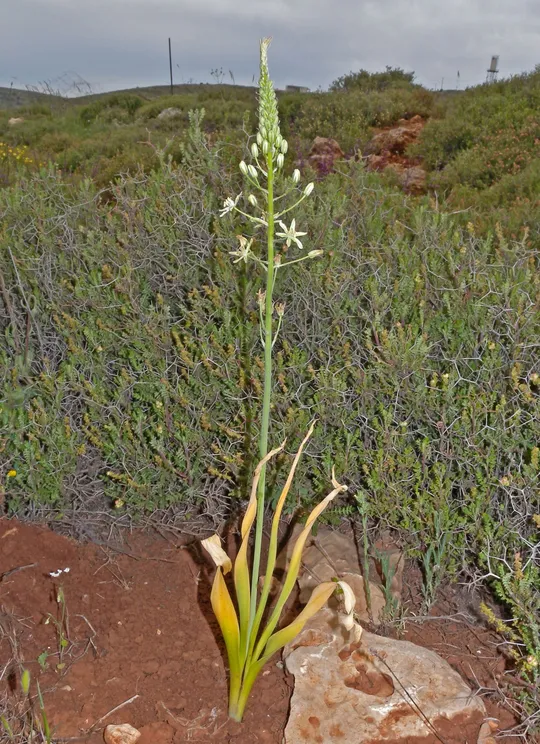
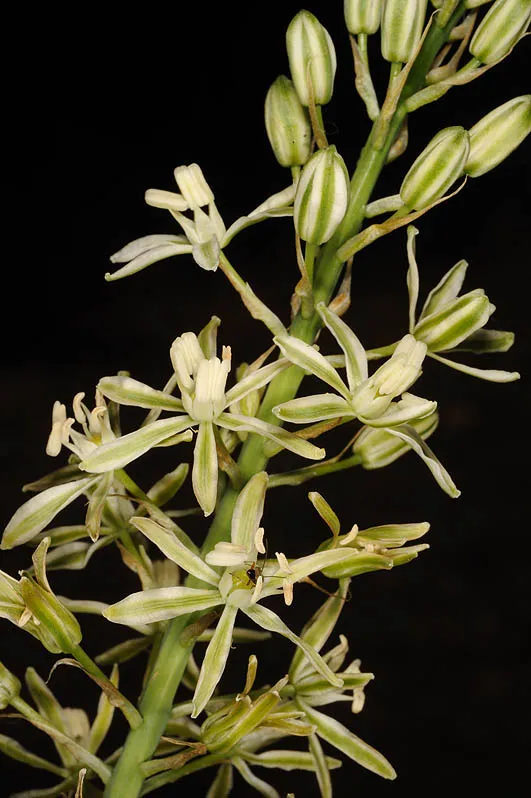
Ornithogalum fuscescens grows in the
Golan Heights, Lower Galilee, Jezreel Valley, Gilboa, Shfela,
Samarian Desert, Samaria and the Judean Mountains. Additional observations from
the slopes of Mount Hermon require verification. The plant is definitely found at
24 sites in the country, and it is estimated that there are about 30 sites. O. fuscescens is extinct from four sites. In the southern Golan Heights, it is
found on the basalt plains in the Nov-El Al area. In the Lower Galilee it is
located in Kfar Kama, Ramat Yavne'el, the Bet Netofa Valley (National Water
Carrier) and Golani Junction. In the Jezreel Valley it is found around the Megiddo
Airport, and the Kishon channel near Ram-On, but has disappeared from the
vicinity of Kfar Yehezkel. In the Gilboa it was found in the 1990s at five
sites between Ma’ale Gilboa and Mount Saul, but it has disappeared from another
site in the area. In Samaria it is limited to the high valleys of the hills in
the Eli, Shiloh and Kida areas. During the last two years Ofra Friedman and
David Lavie discovered O. fuscescens at Rimonim in
the Samarian Desert as a new species for the region. In the Judean Mountains, it
was discovered as a new plant for the region in 1992, in gardens that had once been
orchards in Kiryat HaYovel in Jerusalem. Subsequently it was also discovered on
the Aspar Ridge and in Mitspe Yair. In the Shfela it disappeared from the Lakhish
area where it was collected in 1936, but was found again in 2009 by Oz Golan at
Gal’on.
According to the Flora Palaestina it grows in Gilead and
Ammon in Jordan.
Heavy alluvial soils on mountains and in valleys.
The genus Ornithogalum
consists of 120 species
found mainly in the Eurasian temperate regions, although in South Africa there
are 54 species that probably constitute the ancient biogeographic core of the
genus. Thirty-four species grow in Europe, 24 in Turkey and 10 species in
Israel. Of these O. arabicum is the only one that belongs to the large groups
in South Africa and the fact that it is a wild plant in Israel and in the
Mediterranean Basin is doubtful (Feinbrun, 1986). It is common in traditional
Arab gardens and is a common garden plant to this day. O. fuscescens belongs to the subgenus Beryllis,
which has a typical elongated raceme-like inflorescence unlike the umbel-like
inflorescence in the other species in the genus. The two other additional
taxons in this group have bright white flowers and a shorter inflorescence: O. narbonense that is common
throughout the Mediterranean region and grows scattered in open woodland and in
scrubland. A special subspecies of O.narbonense, ssp. brachystachys, which is smaller and
shorter than the normal subspecies, grows in open rocky habitats from the
Mediterranean region to the Negev Highlands. In the past, it was considered an independent
species.
·
The number of regions and sites where Ornithogalum fuscescens grows is
relatively stable, with a slight extinction trend in some of the populations.
·
As a rule, each population consists of
only a few plants and rarely a few tens of plants.
·
O. fuscescens sites are
located on heavy soil in locations with a potential for agricultural
development and close to human activity. The small population sizes makes the
species vulnerable to reproductive and demographic threats and to the danger of
random extinction.
·
O. fuscescens is protected in
Israel within the boundaries of the Nov Swamp Iris Reserve.
·
O. fuscescens is a sub-endemic
species; therefore its local threat is equivalent to its global threat status.
Specific areas of
heavy soil and traditionally cultivated land should be identified and declared
protected sites in which Ornithogalum fuscescens populations can grow.
Ornithogalum fuscescens is sub-endemic
to our region: it grows in Syria (up to Aleppo), in the Anti-Lebanon mountains
and southwards in Israel down to the Shfela.
Ornithogalum
fuscescens is a
relatively rare geophyte that appears in extremely small populations, on heavy
alluvial soil in mountainous areas and valleys, occasionally in cultivated
areas or in areas with human activity. It is threatened by development and its
small population size. The importance of its conservation stems from it being
endemic to Israel, Jordan, Syria and Lebanon.
Current Occupancy Map
| 1000 squre meter pixel | 5000 squre meter pixel | 10000 squre meter pixel | |
|---|---|---|---|
| number of observations | 0 | 0 | 0 |
| in total pixels | 0 | 0 | 0 |
| Family | Liliaceae |
| Classification | On the endangered species list |
| Ecosystem | Mediterranean |
| Chorotype | Eastern Mediterranean |
| Conservation Site | The Gilboa |
| Rarity |
1
2
6
|
|---|---|
| Vulnerability |
0
3
4
|
| Attractiveness |
0
0
4
|
| Endemism |
0
1
4
|
| Red number |
1
3.7
10
|
| Peripherality | N |
| IUCN category | DD EW EX LC CR EN VU NT |
| Threat Definition according to the red book | Vulnerable |
 Based on:
Based on:
